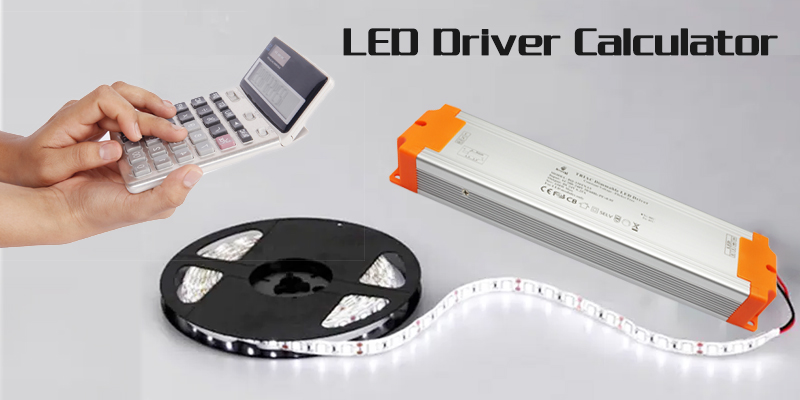Choosing the right power supply for your LED strips can seem daunting, especially with the many technical specifications to consider. Whether you’re lighting up a room or designing intricate displays, understanding the power requirements and limits of your power supply is essential for a safe and efficient setup.
A single power supply can power multiple LED strips as long as the total wattage of the strips does not exceed 80% of the power supply’s maximum wattage capacity. Voltage compatibility and wiring considerations are also important factors in determining how many strips you can connect.
To make the most of your LED lighting, let’s break down the essential calculations and tips for optimizing your power supply setup.
Can I Connect 2 LED Strips to One Power Source?
Choosing to connect two LED strips to a single power supply can be efficient and cost-effective. However, it requires careful planning to avoid common pitfalls.
A single power source can support two LED strips if their combined wattage does not exceed 80% of the power supply’s capacity. Wiring in parallel is recommended for consistent voltage.

Wiring Methods: Series vs. Parallel
When wiring LED strips to a power supply, the method you choose affects performance:
- Series Wiring: Not ideal for LED strips as voltage drops significantly across the setup.
- Parallel Wiring: Maintains consistent voltage, ideal for multiple strips powered by the same source.
Avoiding Voltage Drops
Voltage drop becomes an issue with long LED strip runs or high-powered setups. To prevent this:
- Use thicker gauge wires to minimize resistance.
- Add power injection points for longer strips.
- Limit the length of each strip to the manufacturer’s recommendation.
A well-designed setup ensures uniform brightness and extends the lifespan of your LED strips.
How Many LEDs Can a 12V Power Supply Handle?
To determine how many LEDs your 12V power supply can support, you need to calculate based on the strip’s specifications.
A typical 12V power supply can handle multiple strips depending on their current draw and wattage. Use the formula: Total Wattage = Voltage × Current.
Calculation Example
Suppose you have an LED strip that uses 4.8 watts per meter:
- Length of LED strip = 10 meters.
- Total wattage = 4.8 W × 10 m = 48 W.
- Add a 20% safety margin: 48 W × 1.2 = 57.6 W.
If your power supply is rated at 60W or higher, it can safely power this strip.
| Spesifikasi | Nilai |
|---|---|
| Voltage (V) | 12V |
| Current per meter (A) | 0.4A |
| Power per meter (W) | 4.8W |
This table shows how to align your LED strip’s specifications with your power supply’s capacity.
How Many LEDs Can Run Off 5V?
Lower voltage setups like 5V LED strips have different requirements and challenges compared to their 12V counterparts.
A 5V power supply can power fewer LEDs due to higher current draw. Voltage drop is a bigger concern in long runs.
Factors to Consider
- Current Draw: 5V LEDs often require more amps than 12V ones.
- Wire Resistance: Resistance increases over distance, causing brightness to fade.
- Voltage Drop Mitigation: Power injection every few meters is essential.
Contoh Perhitungan
For a 5V LED strip that consumes 14.4 watts per meter:
- Length = 2 meters.
- Total wattage = 14.4 W × 2 m = 28.8 W.
- Safety margin = 28.8 W × 1.2 = 34.56 W.
Choose a power supply rated for at least 35W to ensure stable operation.
How to Size a Power Supply for LED Strip Lights
Selecting the right power supply involves simple calculations and attention to detail.
To size your power supply, calculate the total wattage of your LED strips, add a 20% safety margin, and ensure voltage compatibility.
Panduan Langkah-demi-Langkah
- Determine LED Strip Specifications: Check voltage and wattage per meter.
- Measure the Length: Multiply by total meters in your setup.
- Add a Safety Margin: Multiply the result by 1.2 for a buffer.
Example
- 5 meters of 12V LED strip at 4.8 watts per meter:
- Total wattage = 5 × 4.8 = 24W.
- Safety margin = 24 × 1.2 = 28.8W.
A 30W or higher power supply is suitable. You can use our Kalkulator Driver LED Online.
What Happens If You Overload a Power Supply?
Overloading your power supply can lead to serious issues, including failures and potential fire hazards.
Overloaded power supplies may overheat, fail, or cause damage to connected devices. Ensure total wattage remains under 80% of capacity.

boqi 0 10v dimmable led drivers and dimmers
Risks of Overloading
- Terlalu panas: Excessive load generates heat, damaging components.
- Reduced Lifespan: Power supplies operating beyond capacity degrade faster.
- Safety Hazards: Fire or electrical failures can occur.
Best Practices
- Regularly monitor your setup for signs of strain, such as dimming LEDs or excessive heat.
- Use a power supply with sufficient capacity and a safety margin.
| Sign of Overload | Potential Cause |
|---|---|
| Dimming LEDs | Voltage drop |
| Power supply overheating | Overload |
| Frequent failures | Insufficient capacity |
Kesimpulan
Powering multiple LED strips from one power supply is achievable with proper calculations and careful planning. By understanding your power supply’s capacity and following best practices, you can create stunning LED setups that are safe, efficient, and long-lasting. Always prioritize safety margins and voltage compatibility for optimal performance.












